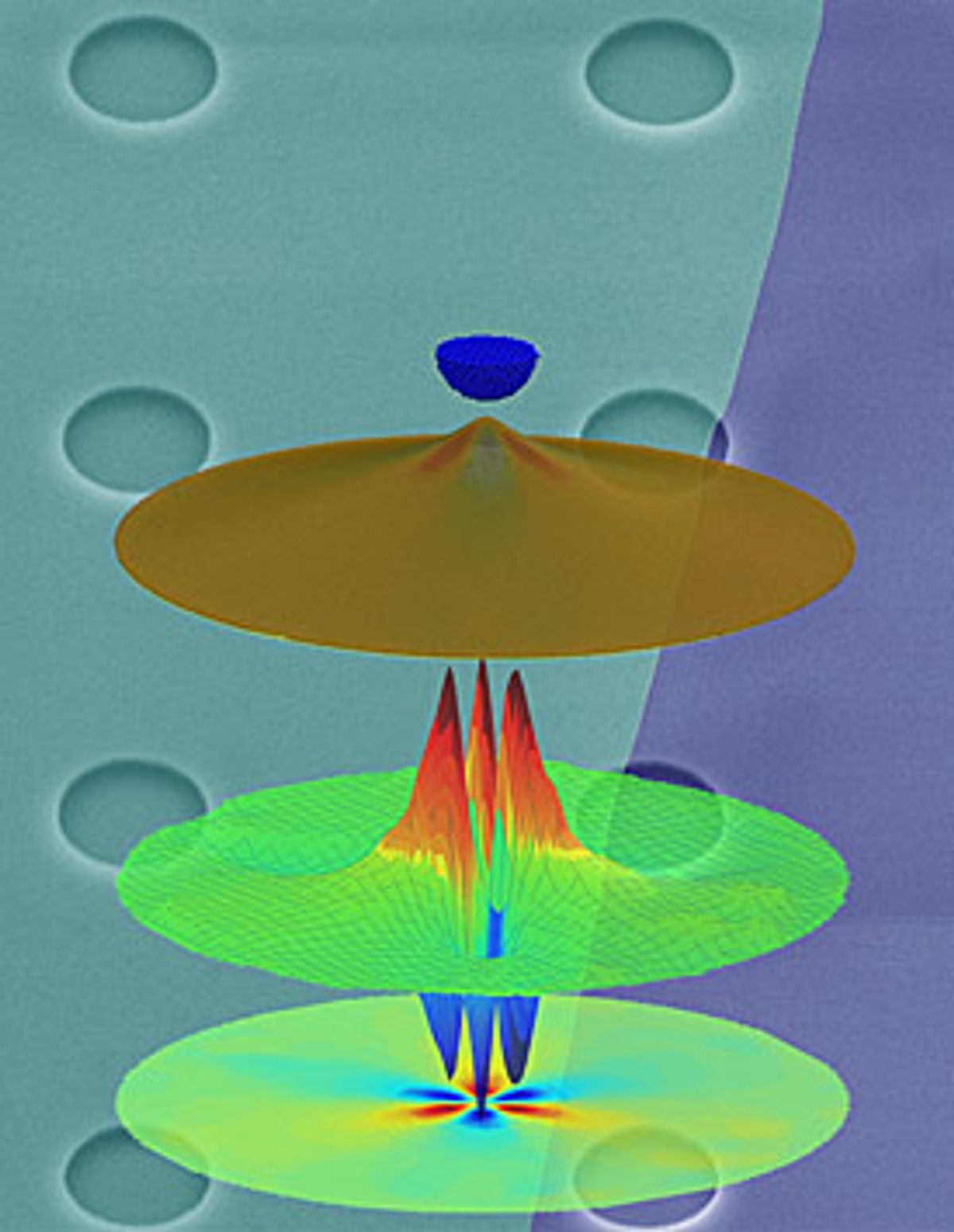The main preoccupation with graphene research has been trying to impart a band gap to the wonder material. Researchers at the University of Wisconsin-Milwaukee were able to get graphene to behave like a semiconductor earlier this year by making a new variety of graphene dubbed “graphene monoxide”. But now researchers at National Institute of Standards and Technology (NIST) and the University of Maryland discovered they could do it by just treating graphene like a drumhead.
The research was published in the journal Science under the title “Electromechanical Properties of Graphene Drumheads” and is available with a subscription.
Initially the aim of the NIST and University of Maryland team was to see if they could just slow electrons down with the use of a substrate. So they suspended a layer of graphene over a substrate of silicon dioxide that contained shallow holes. When the graphene was laid on top of these holes, it formed a kind of graphene drumhead.
The next step, of course, was to measure their new graphene drumhead. It was then that they discovered when the tip of the scanning probe microscope (SPM) approached the graphene, it rose up to meet the tip. The attraction of the graphene to the SPM tip was caused by van der Waal force, in which a weak electrical force is created that attracts objects together.
"While our instrument was telling us that the graphene was shaped like a bubble clamped at the edges, the simulations run by our colleagues at the University of Maryland showed that we were only detecting the graphene's highest point," says NIST scientist Nikolai Zhitenev in the NIST press release covering the research. "Their calculations showed that the shape was actually more like the shape you would get if you poked into the surface of an inflated balloon, like a teepee or circus tent."
If you tightened the graphene drumhead enough so that it actually went into the shallow hole and created a kind of tent like shape, the graphene started to behave like a quantum dot.
This result could open up an entirely new avenue of research in which by simply altering the shape of graphene you can maintain its high conductivity but create a band gap as well.
Zhitenev further noted in the release: "Normally, to make a graphene quantum dot, you would have to cut out a nanosize piece of graphene," says NIST fellow Joseph Stroscio. "Our work shows that you can achieve the same thing with strain-induced pseudomagnetic fields. It's a great result, and a significant step toward developing future graphene-based devices."
Dexter Johnson is a contributing editor at IEEE Spectrum, with a focus on nanotechnology.




